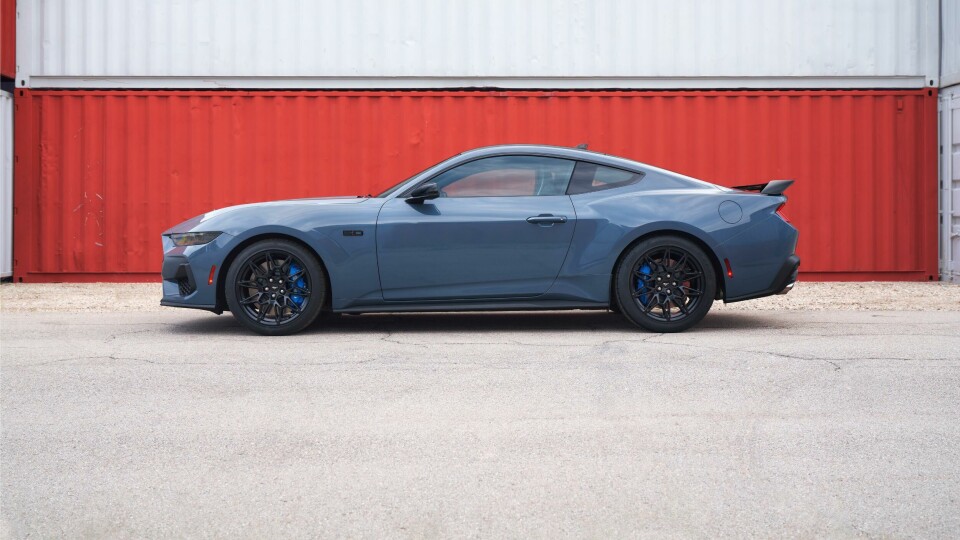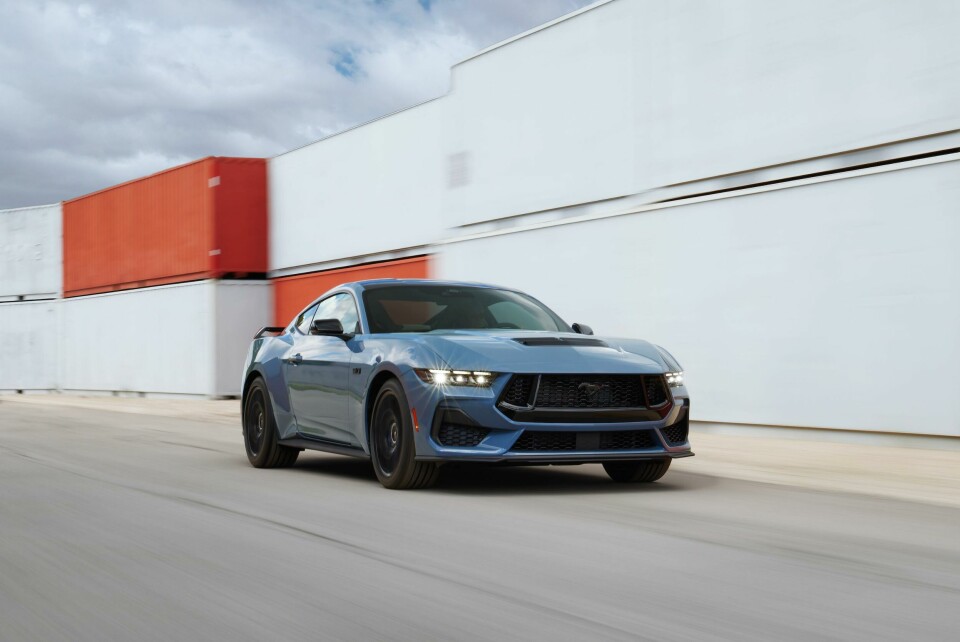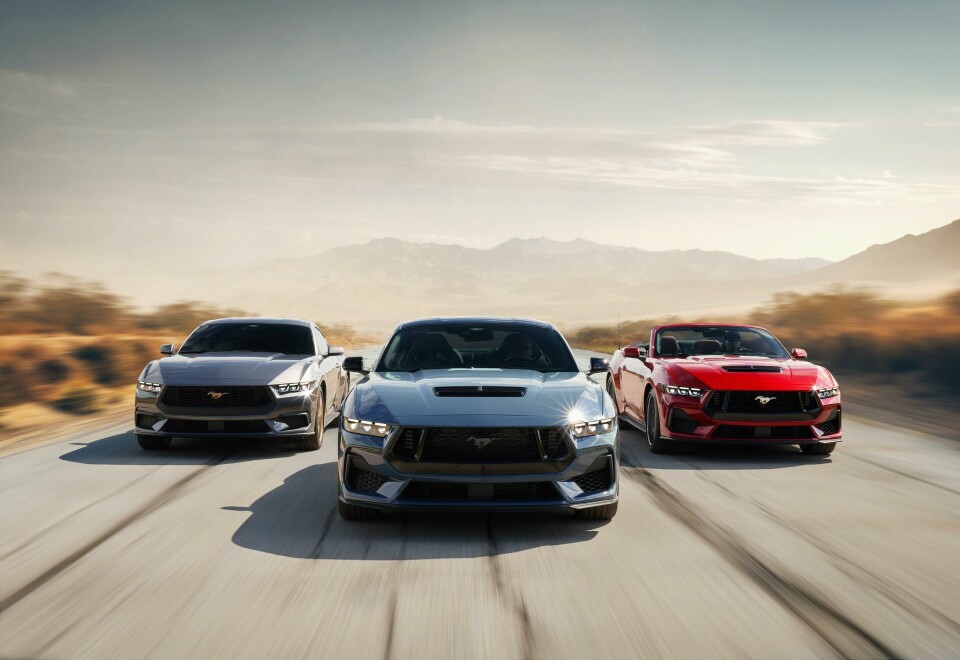
2024 Ford Mustang Debuts: “Pure American muscle”
The last ICE-powered version of the iconic pony car, the Ford Mustang, gets a crisp, edgy design and more tech to attract younger buyers
When Ford designers started work on the 7th generation of the iconic Mustang, they didn’t yet know they’d be tweaking a classic recipe. “When we ask our designers around the world to start sketching on Mustang, we don’t have to give them a design brief,” says Chris Walter, Mustang design manager. “They already know what Mustang is. It’s that long hood, that beautiful silhouette, the short deck and strong rear haunches.” Walter and the rest of the design team knew they wanted this generation — what is purported to be the last ICE Mustang — to be special, but they didn’t quite know how.
“We knew we wanted Mustang to be ‘sexy’ and ‘edgy,’” Walter remembers. “We had a design that was nice, but we were looking back at those words and also trying to push for innovation for a new customer.” With their hearts not quite set on the initial theme, designers developed a second model, which, Walter says, “really pushed the design to the edgy side.”
“The outgoing car is more of a global car…This seventh gen is pure American muscle.”
A week before COVID-19 sent the U.S. into lockdown, the Ford design team invited 30 Millennials and Gen Z employees to the viewing courtyard to look at both potential models for the seventh-generation Mustang. “They overwhelmingly chose the more modern, shear, crisp design,” Walter says.
Over the next weeks and months, the teams worked — first all remotely, then back in the studio — on this new direction. “The outgoing car is more of a global car,” Walter observes. “This seventh gen is pure American muscle.”
In a walkaround at Ford’s facilities in Dearborn, MI ahead of its official debut at the Detroit Auto Show, Walter points out a broad stance, shortened rear overhang, and fast roofline. The beltline, he says, has been dropped by around 13 millimetres, “just enough to give it more muscle.” In front, the U-shaped upper grille is influenced by the Mustangs made from 1964 to 1967. A strong horizontal brow stretches from east to west, accentuating the low frontal width.
The standard model is differentiated from the performance-oriented GT with a completely different front end, as well as a new front splitter and hood extractor, done in gloss black. Signature tri-bar headlamps are animated in a new welcome sequence. From the side, powerful rear haunches go into the body side shear and sharp. In the rear, a fresh take on the chevron tail lamps flank a dual-exhaust setup on the 2.3 model and quad tail pipes on the GT.
In all, 11 exterior colours will be offered, including Vapor Blue (and almost grey-like hue) and Yellow Splash. A Mustang Design Series allows for factory customization options such as the Bronze Design Series Appearance Package, which adds bronze alloy wheels and bronze badging. Keeping the cockpit driver-oriented while introducing new displays and technologies were top priorities for the interior design team. “We knew what customers wanted and designed the most digital Mustang ever while retaining the all-important driver-focused cockpit,” Garcia says.
Traditionally, the Mustang used a “double brow” theme across the dash, but Interior design manager Ricardo Garcia said the new design had to be disruptive. “The feedback we heard was, I want it to be competitive with what’s out now, and be a bridge to the future,” Garcia remembers. The new interior design flows from pillar to pillar, defined by a reconfigurable, 12.4-inch digital cluster and adjacent central display. The user interface is a custom skin over Ford’s current Sync 4, with graphics powered by Unreal Engine.
The redesign is a big sendoff for a car that’s been the epitome of red-blooded, drifting, gas-burning American culture for nearly 60 years
Garcia and his team also eliminated some controls on the centre stack, replaced HVAC controls with capacitive switches with haptic feedback, but kept a traditional volume knob. The execution is sportier and much better integrated than the Mustang Mach-E crossover, whose central portrait-oriented screen and gigantic volume knob look stuck-on. A new steering wheel has a flat-bottom design and is easier to grip. “Removing some of these physical buttons, such as radio and climate control, and integrating them into a digital display was popular in research with Millennials, Gen-Z, and traditional Mustang drivers alike,” says Garcia.

Colour and trim options include a standard cloth interior with optional Micro Suede vinyl inserts and black seat belts. Premium models get upgraded wrapped and accent stitched across the instrument panel and door trim, while EcoBoost models feature Ford’s ‘ActiveX’ synthetic leather upholstery. GT models get genuine leather inserts, with higher-level models offering accent stitching and a unique seat perforation.
The redesign is a big sendoff for a car that’s been the epitome of red-blooded, drifting, gas-burning American culture for nearly 60 years. Although Ford hasn’t officially confirmed, this is likely the last ICE-powered Mustang in history, as the brand — along with the rest of the industry — transitions to electric. Those who want a last hurrah in the car whose predecessor launched Steve McQueen over the hills of San Francisco, can choose from a 5.0-liter Coyote V8 engine, paired even with a six-speed manual transmission or a 2.3-liter EcoBoost engine. Ford hasn’t yet released performance specs.
The 2024 Mustang will go on sale in the U.S. starting next summer and will be assembled at the company’s Flat Rock Assembly Plant in its home state of Michigan.








































































